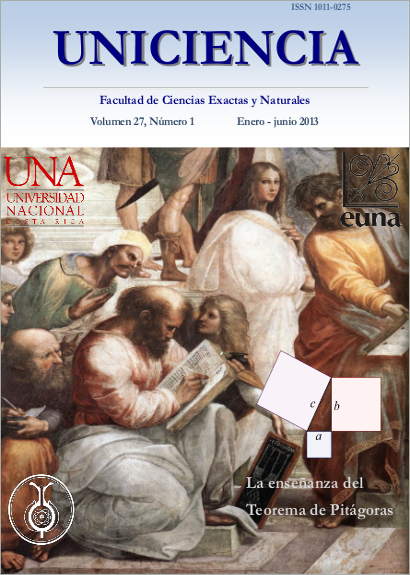The teaching of the Pythagorean theorem: classroom experience with the use of geogebra according to Van Hiele model
Keywords:
reasoning, geometry, teaching, Van Hiele, Phytagoras, GeoGebraAbstract
The present article has as purpose to present the results of an experience carried out with high school students with on the issue of the Pythagorean theorem and its reciprocal supported the use of GeoGebra and in the Van Hiele geometric reasoning model. For this it was designed and it implemented a methodological strategy, with twelve activities, to a group of ninth year of secondary education of Costa Rica, in the II trimester 2009, and compared the level of reasoning displayed by them with those who worked on this topic a traditional approach. The study was of qualitative type. Among the main findings highlighted that students who developed the activities supported by the GeoGebra felt more motivated to study Mathematics, especially Geometry, than those who did so under the traditional approach and the methodological strategy used in managed make many of the students who had low grades were motivated to "compete" and discuss mathematical ideas with students who had better grades than them, so that we can say that this strategy helped to strengthen their confidence in their interaction with others.Downloads
Published
How to Cite
Issue
Section
License
Authors who publish with this journal agree to the following terms:
1. Authors guarantee the journal the right to be the first publication of the work as licensed under a Creative Commons Attribution License that allows others to share the work with an acknowledgment of the work's authorship and initial publication in this journal.
2. Authors can set separate additional agreements for non-exclusive distribution of the version of the work published in the journal (eg, place it in an institutional repository or publish it in a book), with an acknowledgment of its initial publication in this journal.
3. The authors have declared to hold all permissions to use the resources they provided in the paper (images, tables, among others) and assume full responsibility for damages to third parties.
4. The opinions expressed in the paper are the exclusive responsibility of the authors and do not necessarily represent the opinion of the editors or the Universidad Nacional.
Uniciencia Journal and all its productions are under Creative Commons Atribución-NoComercial-SinDerivadas 4.0 Unported.
There is neither fee for access nor Article Processing Charge (APC)





